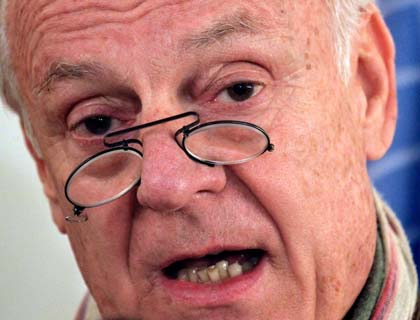KABUL - The first half of this year was the deadliest six months for civilians in Afghanistan since the decade-old war began, the country's U.N. mission said on Thursday. Civilian deaths hit a record high, up 15 percent compared to the first half of 2010, due to roadside and suicide bombings, increased ground fighting and more deaths from air strikes. The United Nations Assistance Mission in Afghanistan (UNAMA) said 1,462 civilians had been killed in conflict-related incidents. It blamed insurgents for 80 percent of those deaths -- up nearly a third on the same period last year.
"The rising tide of violence and bloodshed in the first half of 2011 brought injury and death to Afghan civilians at levels without recorded precedent in the current armed conflict," the report said, adding that plans to hand over security in parts of the country helped fuel the rise in casualties.
"Violence rose as (insurgents) sought to demonstrate that Afghan security forces could not manage security on their own."
Staffan de Mistura, special representative in Afghanistan for the U.N. Secretary-General, told a news conference the U.N. mission had been in contact with the Taliban to ask them to reduce the number of civilian deaths. He declined to comment on their response to the U.N.'s request.
Pro-government forces, including the Afghan police and army and NATO-led troops were responsible for 14 percent of civilian deaths, a drop of 9 percent. But air strikes, one of the most controversial tactics in the war, killed more people.
The mid-year report found that air strikes carried out by the NATO-led International Security Assistance Force (ISAF) were the leading cause of civilian deaths by pro-government forces, so far killing 79 civilians in 2011, up 14 percent.
Apache attack helicopters played a much more prominent role, mainly in the east and southeast of the country, said Georgette Gagnon, director of human rights at the U.N. mission.
A third of civilian deaths attributed to air strikes in 2010 were caused by those aircraft, while in the first half of 2011 they were responsible for 56 percent of air strike deaths.
FOOD, REFUGEE CONCERNS
De Mistura said that while ISAF had been successful in reducing the number of civilian deaths it caused, "for an international force that is meant to protect civilians, one civilian killed, even by mistake, is one too many."
The United Nations also warned the full picture could be even worse, as the report did not include data from the northern region of Afghanistan between March and June, because the U.N. office was shut after it was overrun by a mob that killed seven U.N. staff.
"It may be that UNAMA is under-reporting civilian casualties given limitations associated with the operating environment," the report said.
ISAF and the Taliban were not immediately able to comment on the U.N. report.
Pierre Kraehenbuehl, the global director of operations of the International Committee of the Red Cross (ICRC), said he was "gravely concerned" about critical levels of insecurity that risked displacing many more Afghans.
"Many people have told us that they face now an almost impossible dilemma which is either choose a side or leave home," he told a separate news conference in the Afghan capital.
The U.N. World Food Program also said Wednesday that two to three million people across Afghanistan are likely to need extra food aid from September following drought and a poor wheat harvest this year.
MORE COMPLEX SUICIDE ATTACKS
While the number of insurgent suicide attacks in Afghanistan was largely unchanged, the number of civilians they killed soared by half, the largest increase in deaths from any tactic.
Insurgents who have been squeezed in some of their traditional heartlands have tried spectacular urban attacks to underline their reach as NATO troops race to prepare Afghan forces for a security handover which begins this year.
"Suicide attacks in 2011 have become more complex, often using multiple bombers in spectacular attacks that kill many Afghan civilians," found the report.
Eight Afghan civilians and one foreigner were killed last month in an assault on Kabul's Intercontinental hotel, just days after a suicide car bomber killed at least 20 people at a hospital in remote east Afghanistan.
There were 190 targeted killings, compared to 181 in the same period of 2010. Ground combat caused more than 304 deaths, up more than a third, with 188 of those deaths attributed to insurgents, 66 to pro-government forces and 50 to crossfire.
Controversial night raids by the U.S. military, which Afghan President Hamid Karzai has criticised as inciting people to join the Taliban-led insurgency, fell slightly in the first half of 2011, accounting for 2 percent of all civilian deaths.
"However, resentment regarding these raids grew among the Afghan population. Violent demonstrations sometimes followed night raids and led to deaths and injuries of civilians."
The U.N. mission in Afghanistan also said it was concerned by the increasing use of children in the decade-long war, particularly after recording the youngest suicide bomber -- a 12-year-old who killed three civilians and injured 12 on May 1. (Reuters)

